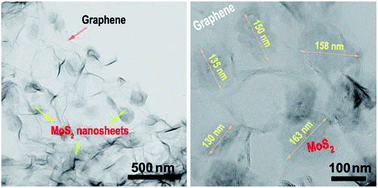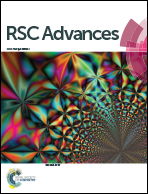Facile synthesis of ultrathin, undersized MoS2/graphene for lithium-ion battery anodes
Abstract
Ultrathin, undersized MoS2/graphene composites are fabricated by a facile acetic acid assisted hydrothermal route and post-annealing. The structure and morphology characterization reveals that the MoS2 nanosheets with ∼5 layers and 130–160 nm in size are decorated on the surface of graphene nanosheets homogeneously and tightly. The effects of acetic acid and N-methyl-pyrrolidone solvent on the microstructures and electrochemical performances of the MoS2/graphene composites are investigated. It is found that the acetic acid could maintain a constant pH and promote hydrolysis of thiourea, and thus many more MoS2 crystals nucleus were formed, while the N-methyl-pyrrolidone could inhibit the aggregation of the as-prepared MoS2 sheets, and therefore few-layered MoS2 sheets with a small size are obtained. Electrochemical tests confirmed that the lithium storage performance of ultrathin, undersized MoS2/graphene is greatly improved compared to that without addition of acetic acid or N-methyl-pyrrolidone solvent. A high reversible capacity of 1229 mA h g−1 is achieved in the initial cycle and is maintained at 942.6 mA h g−1 after 50 cycles at a current density of 100 mA g−1. Even at a current density of 1000 mA g−1, the reversible capacity could be maintained as high as 747 mA h g−1.


 Please wait while we load your content...
Please wait while we load your content...